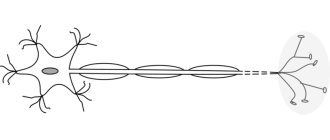Have you ever encountered a situation where a person, under the influence of the public, suddenly changed his own opinion? What do you think was the reason for this? Lack of negotiation skills, lack of awareness of the issue, the desire to please others or the inability to critically assess the situation?
In this article we will talk about such a popular phenomenon as conformism these days, and about the experiments devoted to it.
The essence of Solomon Asch's experiment
Conformity is a person’s ability to adapt and accept ready-made standards and patterns of behavior, as well as categorically recognize existing norms, laws and rules under pressure from society or authorities.
An American Gestalt psychologist of Polish origin, Solomon Asch, studied the behavior of people and their tendency to change their own opinion to please the opinion of the majority.
The researcher hypothesized that when confronted with a group statement that is clearly incorrect, people would be able to maintain independence and not conform. Unfortunately, his experiment, detailed in Asch's Conformity Experiment, showed the opposite.
Asch gathered a group of male students and divided them into subgroups of 8 people. This experiment was presented to the participants as a vision test.
According to the conditions, all members of the group were shown two cards: one of which depicted the main segment X, the second - three segments of different lengths (A, B and C).
In total, Asch showed the subjects 18 pairs of cards with lines depicted on them. After each show, he asked the students the question: “Which segment of those presented on the second card corresponds in length to the segment on the first?”
According to the experimental conditions, one line coincided in length with the main segment, which was noticeable to the naked eye. It seemed that the test results should be unanimous and predictable.
But the catch was that 7 out of 8 subjects in each group turned out to be decoys. They were faced with the task of giving 12 incorrect answers out of 18 (choosing the longer line 6 times and the shorter one 6 times). The only real member of the group, of course, did not suspect anything and always answered questions second to last.
The psychologist set out to test whether the subject could not succumb to the majority opinion and maintain his point of view, while giving the correct answer.
The results of the experiment were disappointing: on average, about a third (32%) of students in this situation agreed with the clearly incorrect answer, joining the dummy group members.
In 12 trials, about 75% of people gave the wrong answer at least once together with the decoy participants in the experiment, and only 25% never agreed with the majority opinion.
Control tests showed that when taking this test alone, subjects gave correct answers 99% of the time, which once again confirms the theory of human conformity.
Experiment results
At the end of the experiment, Solomon Asch and his team interviewed the subjects and found out the reasons for so many incorrect answers. It turned out that people who disagree with the opinions of other group members begin to feel insecure, doubt that they are right, and experience fear of being judged.
The participants in the experiment were not ready to enter into an open conflict with the others, so they began to join the opinion of the majority, despite the fact that they were not completely sure that it was right.
Almost all the subjects experienced an internal emotional conflict, not realizing whose side was right. The choice before them was limited: trust their eyes and go against the group, or doubt their own rightness and join the opinion of the majority. This phenomenon is called “conformity conflict.”
All subjects can be conditionally divided into two groups: “independent” and “submissive”. Among those who were not subjected to group pressure, several types stood out:
- participants who firmly stand on their point of view and are confident in their own rightness;
- participants who experienced emotional discomfort from divergent opinions, but continued to make demonstrative attempts to maintain individuality;
- participants who openly voiced their doubts and indecision, but ultimately gave the correct answers.
Among the subjects who joined the opinion of dummy group members, several types can also be distinguished:
- participants who assured everyone that they saw the segments exactly the same as others;
- participants who saw the correct answer, but considered their perception to be incorrect;
- opportunists who knew the right answer, but decided to join the group's opinion so as not to attract attention to themselves.
Solomon Asch concluded that people conform for two main reasons: because they want to fit into a group and because they believe that the group is better informed than they are.
Many of the students who participated in the experiment were afraid to express their opinions or ask others why they chose this particular segment. Such fears are caused by insufficiently developed communication skills. The ability to ask the right questions and clearly formulate your own answers is one of the most important in the life of a modern person.
The online program “Best Communication Techniques” will help you establish the process of communication with absolutely any person. With its help, you will learn not only to maintain a conversation on free topics, but also to constructively resolve conflicts and achieve what you want in negotiations. By being able to think critically and defend your point of view, you reduce the likelihood of falling into the trap of conformity.
Solomon Asch identified a direct pattern between the number of confederates (people with an opposing point of view) and the percentage of incorrect answers among subjects. In the case when only one person opposes a participant in the experiment, the likelihood of a conforming response is several times less compared to a whole group of disagreers.
It is also interesting that the conformity of the subjects was also influenced by the violation of unanimity among the Confederates. As soon as one of them took the position of the subject and gave correct answers together with him, the percentage of incorrect answers decreased.
Of course, one should not draw conclusions about the tendency toward conformity in all people based on just one experiment. That is why Solomon Asch and his followers decided to continue their research.
conclusions
We constantly encounter various manifestations of conformity. For many people, following others is much easier than defending your own point of view. Many people prefer to follow the path of least resistance and avoid conflicts with others. Sometimes conformity is the only thing that guarantees survival in a certain society.
Asch's experiment, among other things, showed that people who are prone to conformism are not necessarily distinguished by the absence of personal opinions as such. By showing conformity “in public”, in his personal space an individual may experience dissatisfaction with the established order. However, in life we often meet people who, in principle, are devoid of personal opinion. Conformity for such people is not a way of survival or self-affirmation in society, but a natural form of existence. Their desire to be like everyone else takes on a demonstrative character, and they also cannot stand those who stand out from the crowd in some way.
The concept of “spiral of silence” is inextricably linked with conformity. This means that a person is less likely to express an opinion on an issue if he feels that he is in the minority. In this case, he will prefer not to express his position and outwardly join the general mass. The “spiral of silence” also underlies such a phenomenon as public opinion. According to the theory of the German sociologist Elisabeth No el-Neumann, public opinion represents the position of a small part of society that receives media coverage; This creates the illusion that the absolute majority of the population thinks so. The rest of society, trying to avoid isolation from society and loneliness, outwardly join this “public opinion”, trying not to express their own position. This creates a position that is purely formally shared by most people, although their actual attitude to the problem may be completely different. An example of this phenomenon can be seen in Asch's experiment, where the subject sought to join public opinion, trying to avoid the ridicule of other students; if there was no “public opinion” shared by everyone, the subjects showed greater courage and voiced their position.
Continued research in support of Solomon Asch's theory
To further explore this issue, the psychologist conducted a similar experiment in which real participants were asked to provide answers in writing, while decoy subjects continued to answer orally. The test results showed that the conformity of the subjects in this case decreased by 12.5% compared to the first experiment.
To finally confirm his hypothesis, Solomon Asch conducted another test in which he changed the number of dummy participants. Now in a group of 17 people, only 1 was an assistant psychologist.
The sequence of the experiment itself remained the same, but the behavior of the group members changed. The real participants were confident that they were right and did not take the opinion of the decoy participant seriously, treating him with distrust and ridicule.
After Solomon Asch's research, a series of new tests began among the psychologist's followers who wanted to confirm his theory about people's conformity.
Thus, Japanese scientists Kazuo Mori and Miho Arai conducted their own experiment, in which 104 people of both sexes took part. You can read more about this study in the article No need to fake it: Reproduction of the Asch experiment without confederates.
Participants were divided into groups of 4 people. They were given the task, as in the study of Solomon Asch, to determine segments of equal length. However, instead of decoys, this time they used glasses with special polarizing filters, with the help of which the same image could be perceived in different ways.
Three members of the group had glasses with the same filter, distorting perception. That is, a majority was again created in the groups, which gave the wrong answer. But, unlike the previous experience, this time they, just like the subject with normal lenses in glasses, were confident that they were right.
The results turned out to be quite interesting: only the fairer sex showed conformity, like the participants in Solomon Asch's experiment. The men did not succumb to the opinion of the majority and remained unconvinced.
Mori and Arai explained this fact for two reasons:
- the peculiarities of raising Japanese children (in boys, independence and the ability to defend their position are cultivated from childhood);
- good relations between the participants, which could influence their opinions.
According to researchers, such an experiment is closest to real life, because Most often, we make really important choices under the influence of people close and well known to us.
What is conformity
Photo by Liza Summer: Pexels
Conformity is a psychological characteristic of the position of an individual in relation to the position of the group. This characteristic reflects the extent to which you submit to group pressure in forming an opinion and making a decision.
Man by nature is a social being. The full development of the personality of any of us directly depends on our interaction within society. The very concept of personality reflects the bearer of an individual principle, which is revealed in the context of social relationships.
All your habits, moral values, the entire set of behavioral masks, all this was formed, starting from the very moment of birth, under the influence of the people with whom you interacted and the environment in which you were. The process of developing your personality continues throughout your life. As you grow up, you gain new experiences that can completely change your previously set priorities. This is a painful process, but necessary and natural.
Experiments disproving Solomon Asch's theory
Solomon Asch's theory had not only followers, but also critics who saw a number of contradictions in his work.
One of their main arguments they used was the presence of dummy subjects. According to Asch's opponents, even well-prepared indoctrinated students could cause mistrust among the real participants in the experiment about its real purpose. This, in turn, could affect the purity of the study.
Many researchers believe that the sample of subjects was incomplete. All participants were male students belonging to the same age group, which means the study cannot provide the full picture.
Some critics believed that the high percentage of conformity responses found by Asch was a reflection of American culture in the 1950s and told us more about the historical and cultural climate of the United States in the 1950s than about the phenomenon of conformity.
In the 1950s, America was very conservative and persecuted anyone who held different views. Conforming to American values was the logical and expected behavior of people of those times.
For example, American researchers Stephen Perrin and Christopher Spencer, who studied Asch’s work, stated that his experiment was “a child of its time.” The article Solomon Asch - Conformity Experiment describes a study they conducted in 1980.
Their experiment was almost identical to the experiment conducted by Solomon Asch, except for one small detail: they invited engineering students, mathematicians and chemists as test subjects. The test results showed that in only one out of 396 cases did the subject join the erroneous majority.
Perrin and Spencer attributed this to the changes that had occurred in the cultural and political environment. The values of obedience and submission were replaced by an era of self-expression, which could not but affect the level of conformity of people.
A huge number of similar experiments have been carried out, and scientists working on this issue have not yet come to a common understanding of what exactly influences the change in people’s opinions in favor of the majority.
One way or another, understanding the phenomenon of conformity allows us to critically perceive incoming information and avoid mistakes made under the influence of other people's views on life.











